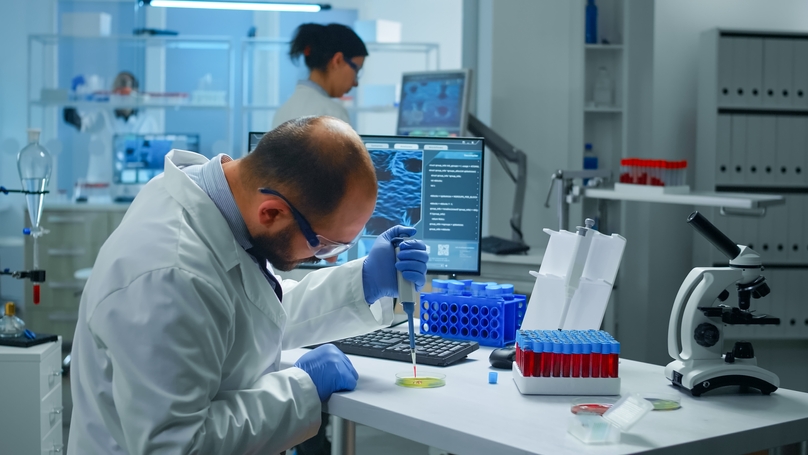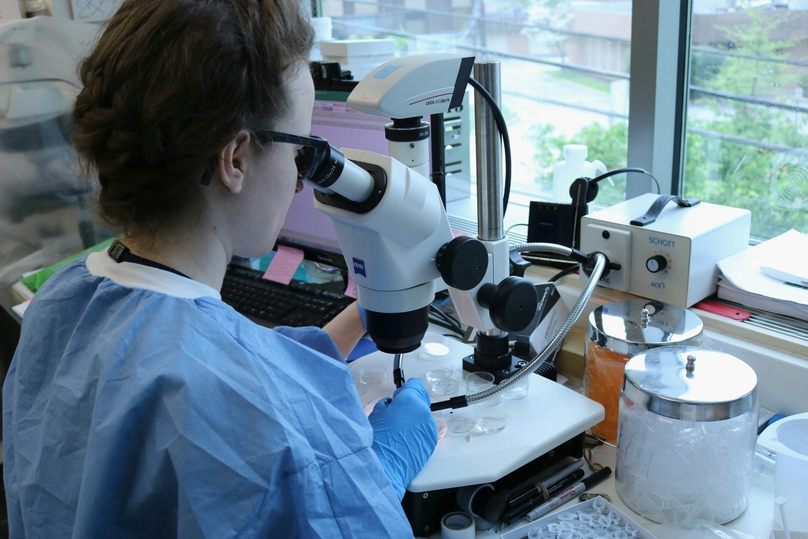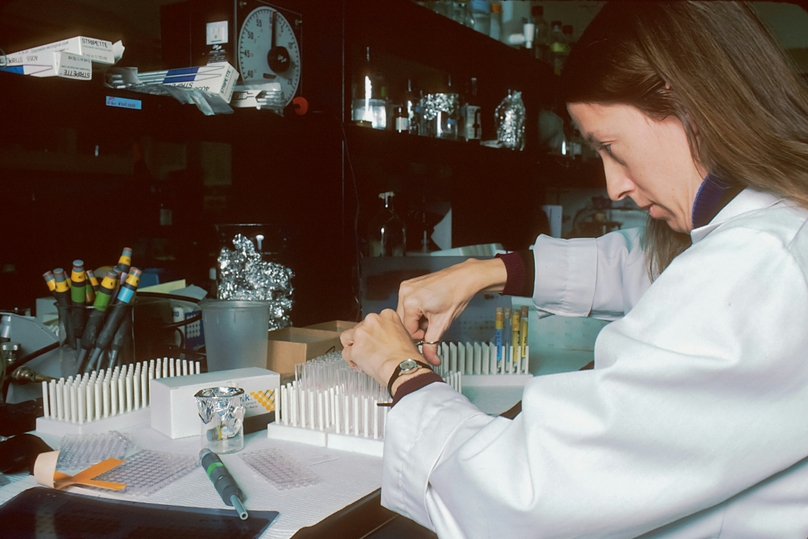In the hustle and bustle of a traditional laboratory, researchers often find themselves bogged down by routine tasks such as data entry, sample preparation, and inventory management. These time-consuming and tedious activities slow the pace of scientific discovery and increase the risk of human error. Imagine a world where these mundane tasks are automated, allowing scientists to focus on groundbreaking research. This vision is becoming a reality with the advent of online automation in laboratories.
The Power of Online Automation
Online automation in laboratory research uses advanced software and internet-connected devices to streamline lab processes. This involves automated data collection, remote monitoring, sample handling, and inventory management. These systems work seamlessly with laboratory instruments and workflows, ensuring smooth and efficient operations.
Benefits Unveiled
Increased Efficiency: Online automation significantly streamlines laboratory processes. By automating repetitive tasks, researchers can spend more time on important activities that drive scientific innovation.
For example, automated data collection systems can gather data from instruments in real time. This eliminates the need for manual data entry, reduces turnaround times, and allows researchers to focus on analyzing results and planning new experiments.
Enhanced Accuracy: Human error is a common problem in laboratories. It often leads to compromised data quality. Online automation minimizes these errors by ensuring precise and consistent data handling.
Automated systems follow predefined protocols accurately, resulting in higher data integrity and reliability. This means the data collected is more accurate and trustworthy, which is crucial for scientific research.
Improved Collaboration: Online tools facilitate data sharing and remote access, enabling researchers to collaborate easily across different locations.
Cloud-based platforms allow team members to access and analyze data in real time. This fosters a more collaborative and dynamic research environment where scientists can work together, share insights, and make decisions more quickly and efficiently.
Reduced Costs: Automation can lead to significant cost savings for laboratories. By reducing labor and inventory costs, minimizing material wastage, and optimizing resource use, laboratories can achieve more with less. This is particularly important as budgets for research can be tight.
Markets and Markets report predicts the global laboratory automation market will grow from $5.1 billion in 2022 to $7.1 billion by 2028, highlighting the economic benefits of automation. This growth indicates that more laboratories are recognizing the cost-saving potential of automation and are investing in these technologies to improve their operations.
Specific Applications
Automated Data Champions
Online automation systems can automatically collect data from laboratory instruments, providing real-time insights and significantly reducing the burden of manual data entry.
These systems not only gather data but also analyze and visualize it, enabling researchers to make quicker and more informed decisions. For example, an automated data collection system can continuously monitor experimental conditions, alerting researchers to any deviations and ensuring optimal outcomes.
Automated systems also enhance the accuracy and consistency of data, which is crucial for reliable experimental results.
Remote Lab, Real Results
The ability to monitor and control experiments remotely is a major advantage for researchers. Online automation allows scientists to oversee their experiments from any location, providing greater flexibility and efficiency. This capability is particularly beneficial for long-term studies and experiments that require constant monitoring.
A National Academies of Sciences study found that 70% of researchers believe that remote monitoring tools have significantly improved their productivity. This remote access not only saves time but also allows for quicker response to any issues that may arise during experiments.
Sample Prep on Autopilot
Repetitive tasks such as sample preparation and handling are prone to errors and inconsistencies. Online automation can manage these tasks with high precision, ensuring consistent sample quality and reducing the risk of contamination.
Automated systems can prepare samples according to exact specifications, improving the reliability of experimental results. This precision is crucial for maintaining the integrity of scientific research and ensuring reproducibility.
Inventory Management Made Easy
Managing inventory is a critical but often overlooked aspect of laboratory operations. Automated laboratory inventory management systems (LIMS) can track inventory levels, manage ordering processes, and ensure that supplies are always available when needed. This eliminates delays caused by stockouts and reduces the administrative burden on researchers.
Automating inventory management allows large, medium, and small laboratories to streamline their operations, reduce waste, and save money on materials and labor.
Real-World Impact
A notable example of successful online automation implementation can be found at the University of California, San Francisco (UCSF). The UCSF Center for Digital Health Innovation (CDHI) has been at the forefront of integrating artificial intelligence (AI) and automated systems into their workflows.
By automating data collection and remote monitoring processes, UCSF has significantly enhanced research productivity and accuracy. These advancements have not only streamlined workflows but also improved patient experiences by enabling more efficient and precise data handling.
Researchers at UCSF highlight the ease of collaboration and data sharing as major benefits of these automation systems. With automated workflows, data can be accessed and analyzed in real time, facilitating better communication and decision-making among research teams. The integration of AI has also reduced human errors and allowed for more consistent and reliable data collection.
The success at UCSF demonstrates the transformative potential of online automation in research environments. By leveraging AI and automated systems, they have achieved significant improvements in efficiency and accuracy, setting a benchmark for other research institutions to follow
Challenges Addressed
While the advantages of online automation are clear, the implementation process can present challenges. Initial investments in technology and equipment can be substantial, and there are often concerns regarding data security.
However, many laboratories have found that the long-term benefits, such as increased productivity, accuracy, and collaboration, outweigh these initial hurdles. Implementing robust cybersecurity measures and providing thorough user training can effectively address these challenges.
Furthermore, modular automation solutions allow laboratories to automate specific processes as needed, making it a more flexible and scalable approach.

The Future of Effortless Labs
Emerging Trends
The future of online automation in laboratories is very promising. New technologies like artificial intelligence (AI) and machine learning (ML) are set to make a big impact, such as in forensic DNA analysis. These technologies can improve how we analyze data, design experiments, and automate processes.
AI systems can predict the results of experiments and suggest ways to make them better. This makes research faster and more accurate. With AI and ML, labs will be able to get more detailed insights from their data, leading to better research outcomes.
The Effortless Lab of Tomorrow
In the future, laboratories will be much more integrated and automated. Researchers will be able to conduct experiments more easily than ever before.
Automation will take care of routine tasks like data entry and sample management. This will allow scientists to spend more time on creative and strategic work. As a result, labs will be more productive and make more groundbreaking discoveries.
The research experience will become more efficient and streamlined. This vision of the effortless lab of tomorrow means that scientific progress will happen faster, benefiting everyone involved in research.
Conclusion
Online automation offers a plethora of benefits for laboratories, including increased efficiency, enhanced accuracy, improved collaboration, and reduced costs. As laboratories embrace these technologies, they pave the way for a future of effortless and innovative research.
For laboratories interested in exploring online automation solutions, numerous resources and vendors are available to guide the implementation process. By adopting these technologies, laboratories can streamline their workflows and unlock new levels of scientific discovery.


















